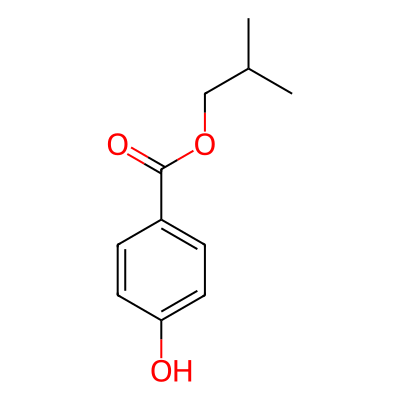| AOP:8 | Upregulation of Thyroid Hormone Catabolism via Activation of Hepatic Nuclear Receptors, and Subsequent Adverse Neurodevelopmental Outcomes in Mammals | Nervous System Disease | Under Development | 0.11 | KE:281 | Thyroxine (T4) in serum, Decreased |
| AOP:42 | Inhibition of Thyroperoxidase and Subsequent Adverse Neurodevelopmental Outcomes in Mammals | Cognitive Disorder | WPHA/WNT Endorsed | 0.12 | KE:281 | Thyroxine (T4) in serum, Decreased |
| AOP:54 | Inhibition of Na+/I- symporter (NIS) leads to learning and memory impairment | Developmental Disorder Of Mental Health | WPHA/WNT Endorsed | 0.1 | KE:281 | Thyroxine (T4) in serum, Decreased |
| AOP:110 | Inhibition of iodide pump activity leading to follicular cell adenomas and carcinomas (in rat and mouse) | Cancer; Endocrine System Disease | - | 0.14 | KE:281 | Thyroxine (T4) in serum, Decreased |
| AOP:112 | Increased dopaminergic activity leading to endometrial adenocarcinomas (in Wistar rat) | Reproductive System Disease; Cancer | - | 0.17 | KE:111 | Agonism, Estrogen receptor |
| AOP:119 | Inhibition of thyroid peroxidase leading to follicular cell adenomas and carcinomas (in rat and mouse) | Cancer; Endocrine System Disease | - | 0.14 | KE:281 | Thyroxine (T4) in serum, Decreased |
| AOP:128 | Kidney dysfunction by decreased thyroid hormone | Urinary System Disease | Under Development | 0.09 | KE:281 | Thyroxine (T4) in serum, Decreased |
| AOP:134 | Sodium Iodide Symporter (NIS) Inhibition and Subsequent Adverse Neurodevelopmental Outcomes in Mammals | Cognitive Disorder | - | 0.11 | KE:281 | Thyroxine (T4) in serum, Decreased |
| AOP:159 | Thyroperoxidase inhibition leading to increased mortality via reduced anterior swim bladder inflation | Unclassified | WPHA/WNT Endorsed | 0.12 | KE:281 | Thyroxine (T4) in serum, Decreased |
| AOP:175 | Thyroperoxidase inhibition leading to altered amphibian metamorphosis | Unclassified | - | 0.25 | KE:281 | Thyroxine (T4) in serum, Decreased |
| AOP:176 | Sodium Iodide Symporter (NIS) Inhibition leading to altered amphibian metamorphosis | Unclassified | - | 0.2 | KE:281 | Thyroxine (T4) in serum, Decreased |
| AOP:188 | Iodotyrosine deiodinase (IYD) inhibition leading to altered amphibian metamorphosis | Unclassified | - | 0.2 | KE:281 | Thyroxine (T4) in serum, Decreased |
| AOP:192 | Pendrin inhibition leading to altered amphibian metamorphosis | Unclassified | - | 0.25 | KE:281 | Thyroxine (T4) in serum, Decreased |
| AOP:193 | Dual oxidase (DUOX) inhibition leading to altered amphibian metamorphosis | Unclassified | - | 0.25 | KE:281 | Thyroxine (T4) in serum, Decreased |
| AOP:194 | Hepatic nuclear receptor activation leading to altered amphibian metamorphosis | Unclassified | - | 0.17 | KE:281 | Thyroxine (T4) in serum, Decreased |
| AOP:363 | Thyroperoxidase inhibition leading to altered visual function via altered retinal layer structure | Unclassified | Under Review | 0.12 | KE:281 | Thyroxine (T4) in serum, Decreased |
| AOP:364 | Thyroperoxidase inhibition leading to altered visual function via decreased eye size | Unclassified | Under Development | 0.12 | KE:281 | Thyroxine (T4) in serum, Decreased |
| AOP:365 | Thyroperoxidase inhibition leading to altered visual function via altered photoreceptor patterning | Unclassified | Under Development | 0.12 | KE:281 | Thyroxine (T4) in serum, Decreased |
| AOP:366 | Competitive binding to thyroid hormone carrier protein transthyretin (TTR) leading to altered amphibian metamorphosis | Unclassified | - | 0.14 | KE:281 | Thyroxine (T4) in serum, Decreased |
| AOP:367 | Competitive binding to thyroid hormone carrier protein thyroid binding globulin (TBG) leading to altered amphibian metamorphosis | Unclassified | - | 0.14 | KE:281 | Thyroxine (T4) in serum, Decreased |
| AOP:457 | Succinate dehydrogenase inhibition leading to increased insulin resistance through reduction in circulating thyroxine | Inherited Metabolic Disorder | - | 0.17 | KE:281 | Thyroxine (T4) in serum, Decreased |
| AOP:458 | AhR activation in the liver leading to Subsequent Adverse Neurodevelopmental Outcomes in Mammals | Cognitive Disorder | - | 0.12 | KE:281 | Thyroxine (T4) in serum, Decreased |
| AOP:459 | AhR activation in the thyroid leading to Subsequent Adverse Neurodevelopmental Outcomes in Mammals | Cognitive Disorder | - | 0.11 | KE:281 | Thyroxine (T4) in serum, Decreased |
| AOP:465 | Alcohol dehydrogenase leading to reproductive dysfunction | Unclassified | - | 0.12 | KE:748 | Increased, Estrogen receptor (ER) activity |
| AOP:532 | Retinoic acid receptor agonism during cerebellar development leading to impaired locomotor function | Unclassified | - | 0.2 | KE:2229 | Cerebellar neuronal differentiation. Decreased |
| AOP:535 | Binding and activation of GPER leading to learning and memory impairments | Developmental Disorder Of Mental Health | - | 0.11 | KE:2233 | Decreased, ERαβ heterodimers |
| AOP:550 | Increased LMNA gene mutation leading to heart failure | Cardiovascular System Disease | - | 0.2 | KE:2066 | Altered Signaling Pathways |
